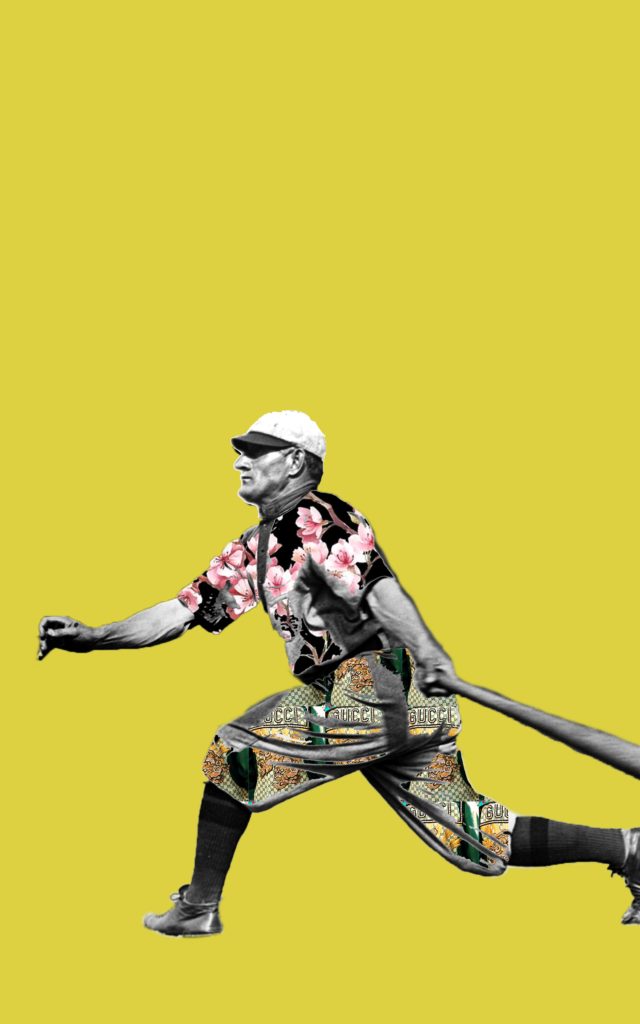Honus Wagner – Downtown Renown
Hometown Hero & One of the Greatest Baseball Players of All Time
Honus Wagner, Pittsburgh Pirate and baseball hall of famer, is one of 14 highlighted Pittsburgh athletes as part of the Downtown Renown: Pittsburgh Sports Greats series showcasing stories as inspirational as they are amazing. Designed in collaboration with artist Gavin Benjamin, find all sports profiles windows currently on view in windows around the neighborhood.
Though he retired as a player more than 100 years ago, Honus Wagner is still considered by many baseball historians to be the greatest shortstop of all times and one of the best players. Born in Chartiers (now Carnegie) in 1974, this hometown hero spent 21 years in the majors. The child of German immigrants, Johannes Peter “Honus” Wagner left school at age 12 to help his father and brothers in the coal mines. The Wagner brothers played sandlot baseball when not working, three of them also made it to the majors.
Honus began his journey to the major leagues with the Paterson Silk Sox of northern New Jersey. Barney Dreyfuss, club secretary for the Louisville Colonels, and player manager Fred Clarke saw and recruited Wagner to Louisville in 1897. When the League later contracted from 12 to 8 teams, they brought Wagner to Pittsburgh with them. He spent 17 seasons with the Pirates, retiring in 1917. Wagner played every position in the infield and outfield except catcher, and flourished at the plate. He hit .300 or better for 15 straight seasons (1899-1913) and won eight National League batting titles.
“The Flying Dutchman”
Known for his speed, “The Flying Dutchman” had 723 stolen bases in his career, leading the NL five times in that statistic. He became the second player to record more than 3,000 hits and retired with 3,420 and a lifetime batting average of .328.
His famously bowed legs made him appear awkward, but Wagner was quick and fluid in the field. He played in the first World Series, which the Pirates lost to Boston in 1903. The Bucs won their first World Series in their new home, Forbes Field, against the Detroit Tigers in 1909.
A standout, Wagner hit .338 in the Series besting the Tiger’s star Ty Cobb who batted just .231. In 1905 Wagner became the first player to have his signature branded on a Louisville slugger bat and he may be best known for the rare T-206 baseball trading card from 1909 that bears his likeness. One of the most valued sports collectibles, there are thought to be about 50 to 100 that survive.
Retirement & Beyond
After retiring in 1917 at the age of 43, Wagner served as a hitting instructor and Pirates coach. He played a little semi pro ball and continued his hobbies of hunting and fishing. A well known sporting goods store bore his name for more than 70 years. In 1936, Wagner became one of the first five men inducted into the Baseball Hall of Fame. The Pirates honored him with a statue dedicated outside the left field corner of Forbes Field in 1955, shortly before he died. That statue stands outside the entrance to PNC Park now, preserving the legacy of one of the Pirates, and baseball’s, greats.
Learn more about the history of baseball in Pittsburgh from the Western Pennsylvania Sports Museum at the Heinz History Center.
This spotlight is a part of the Downtown Renown: Pittsburgh Sports Greats series. Learn more about the project, and look for all 14 sports profile windows in Downtown!

Explore all the featured athletes
Arnold Palmer • Bill Mazeroski • Charles “Chuck” Cooper • Dan McCoy • Franco Harris • Honus Wagner • Joe Greene • John Woodruff • Josh Gibson • Mario Lemieux • Roberto Clemente • Suzie McConnell-Serio • Swin Cash • Sidney Crosby

by Gavin Benjamin
📍 View this Pittsburgh Sports Great window installation at the intersection of Liberty Avenue and 6th Street, Downtown Pittsburgh.

